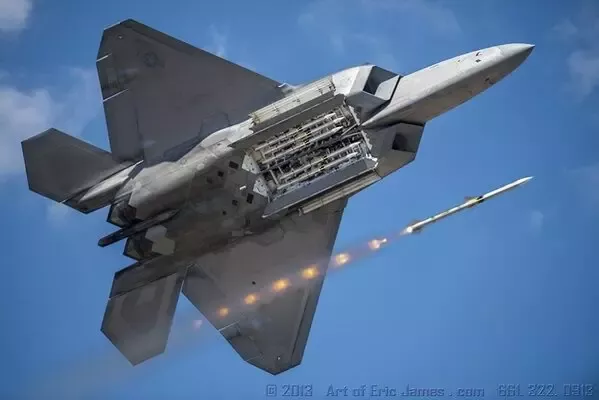More realistic restrictions on remote-cued AAW engagements: Small change, big ramifications
 So, one of the subtle changes we recently introduced as part of our regular service updates to Command has generated something of a spike on tech support questions. Here is a fresh example:
So, one of the subtle changes we recently introduced as part of our regular service updates to Command has generated something of a spike on tech support questions. Here is a fresh example:
I am having a problem: When my units attack with [AAW weapons] it says “Firing unit most obtain from itself or another CEC-enabled platform a high-quality track on the target before firing”. What is the meaning of this? I never encountered this message before.
So let us backtrack a bit and examine this in detail.
What the above report is describing is actually the correct behavior, a result of a major simulation improvement introduced in Build 998.14 last November:
* MAJOR FIX: Resolved the long-standing issue of “blind AMRAAM shots“:
– Units firing AAW ARH weapons (e.g. AMRAAM) must now actively detect the target on their own radar before being able to fire the weapon (ie. it is no longer enough to receive offboard contact from e.g. AWACS and fire based purely on that). This makes it much more challenging to employ AMRAAM-class weapons against stealthy targets or in a heavy-OECM environment.
– After launching an AMRAAM-class weapon, the unit must still keep detecting the contact in order to provide mid-course guidance to the missile. If radar contact is lost for more than 5 seconds, the missile goes into a “blind” state and flies straight ahead (similar to SARH weapons who lose guidance). (Appropriate AI/EMCON logic has been added to encourage this).
Note that CEC-capable weapons can still be launched and mid-guided by a suitable outside datalink-parent platform, as before.
Now of course most players don’t read release notes (or manuals), but the importance of this change is hard to overstate. This is in some ways another important step towards more faithful modelling of the limits of side-wide command & control of operations, as well as cooperative engagements.
In previous versions of Command (as well as all other similar titles), once a unit has a hard contact on a target, the contact information is immediately shared with all other units on the same side (unless they are off the comms grid) and is considered “fire control grade”: Based on this information, even units that have no sensor contact with that target can engage it with any suitable weapons, especially those have a lock-on after launch (LOAL) capability or terminal guidance. While this is usually “good enough” for a typical Harpoon/Exocet salvo or non-precision artillery fire, anti-air warfare (AAW) tracks have much higher precision & accuracy requirements, due to the speed and agility of the targets being engaged. This created a sim realism flaw, and a game exploit: It was possible, for example, for fighters to use offboard tracks provided by EW/GCI radars or AWACS to fire weapons like AMRAAM at targets without having to detect them themselves (this allowed players to deal with stealthy opponents much more easily than they should). In reality this is a major aspect of cooperative-engagement capability (CEC), and is a feature that most air arms still lack.
The B998.14 update fixed this problem: Offboard contacts are still disseminated but, in the case of air contacts, are by default considered as “not fire-control grade quality”. In fact, even on-board detections by non-FC sensors are insufficient: For example, a Su-27 detecting a target on its IRST can use that information to manouver against the target and maybe launch an infrared missile like the R-73/74, but it can no longer blind-fire an ARH weapon like the R-77 or PL-12: It must now first gain a solid onboard radar track on the target.
Here is a common off-board track example:
An orbiting KJ-2000 has made a detection on an incoming intruder. A nearby J-11B has been directed to investigate, and using its IRST has identified the contact as a hostile F-35A. However, if we instruct it to engage it with its PL-12 missiles, we get this:
So, how can we verify that this is indeed happening because the J-11B cannot get a radar lock on the target? We select the contact and use the “Last detections” panel, a UI addition introduced with Command v1.14 & The Silent Service:

Obviously, this has significant ramifications for AAW engagements with modern ARH weapons. Stealthy aircraft, or assets covered with heavy ECM interference, are now particularly difficult to engage even with early warning (this, BTW, is one more reason that the SR-71 was notoriously difficult to engage – even when the missile geometry was right, its jammers were very effective). Fighters with ARH missiles and in a networked environment can remain EMCON-silent for the majority of their patrol, but to actually engage their assigned targets they have to emit even for a short duration – and for non-LPI sets this can be a dangerous tactical decision.
This also highlights one more decisive benefit of CEC. In addition to enabling engagement geometries hitherto impossible and bypassing LOS blocks, CEC also removes the “mandatory onboard FC-quality track” as a requirement from the prefire checklist. First introduced in Swedish Viggens in the mid-90s as part of their AMRAAM upgrade, this capability has also been adopted by the JASDF’s AAM-4 missile and MBDA’s Meteor, while service-wide adoption of weapons like the SM-6 and AIM-120D is spreading this capability to the USAF/USN.
This change is part of an ongoing series of improvements in CMANO’s air combat model; more changes are coming in future updates, which will introduce even greater fidelity and force players to rely even more on real-life tactics and procedures to succeed in the virtual arena.
Comments
Leave a Reply
You must be logged in to post a comment.







